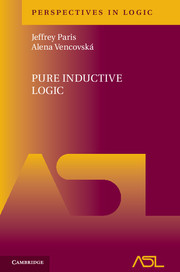Refine search
Actions for selected content:
3326 results in Artificial Intelligence and Natural Language Processing
TwitterNEED: A hybrid approach for named entity extraction and disambiguation for tweet*
-
- Journal:
- Natural Language Engineering / Volume 22 / Issue 3 / May 2016
- Published online by Cambridge University Press:
- 10 July 2015, pp. 423-456
-
- Article
- Export citation
Influence of personal choices on lexical variability in referring expressions
-
- Journal:
- Natural Language Engineering / Volume 22 / Issue 2 / March 2016
- Published online by Cambridge University Press:
- 09 July 2015, pp. 257-290
-
- Article
- Export citation
Textual entailment graphs
-
- Journal:
- Natural Language Engineering / Volume 21 / Issue 5 / November 2015
- Published online by Cambridge University Press:
- 23 June 2015, pp. 699-724
-
- Article
- Export citation
NLE volume 21 issue 3 Cover and Back matter
-
- Journal:
- Natural Language Engineering / Volume 21 / Issue 3 / May 2015
- Published online by Cambridge University Press:
- 28 May 2015, pp. b1-b6
-
- Article
-
- You have access
- Export citation
NLE volume 21 issue 3 Cover and Front matter
-
- Journal:
- Natural Language Engineering / Volume 21 / Issue 3 / May 2015
- Published online by Cambridge University Press:
- 28 May 2015, pp. f1-f2
-
- Article
-
- You have access
- Export citation
Predicting word choice in affective text†
-
- Journal:
- Natural Language Engineering / Volume 22 / Issue 1 / January 2016
- Published online by Cambridge University Press:
- 22 May 2015, pp. 97-134
-
- Article
- Export citation

Pure Inductive Logic
-
- Published online:
- 05 May 2015
- Print publication:
- 02 April 2015
Word from the editors
-
- Journal:
- Natural Language Engineering / Volume 21 / Issue 5 / November 2015
- Published online by Cambridge University Press:
- 20 April 2015, pp. 661-664
-
- Article
-
- You have access
- HTML
- Export citation
Computational generation and dissection of lexical replacement humor*
-
- Journal:
- Natural Language Engineering / Volume 22 / Issue 5 / September 2016
- Published online by Cambridge University Press:
- 16 April 2015, pp. 727-749
-
- Article
- Export citation
An automatic approach to identify word sense changes in text media across timescales
-
- Journal:
- Natural Language Engineering / Volume 21 / Issue 5 / November 2015
- Published online by Cambridge University Press:
- 16 April 2015, pp. 773-798
-
- Article
- Export citation
Morphologically rich Urdu grammar parsing using Earley algorithm
-
- Journal:
- Natural Language Engineering / Volume 22 / Issue 5 / September 2016
- Published online by Cambridge University Press:
- 16 April 2015, pp. 775-810
-
- Article
- Export citation
CO-graph: A new graph-based technique for cross-lingual word sense disambiguation
-
- Journal:
- Natural Language Engineering / Volume 21 / Issue 5 / November 2015
- Published online by Cambridge University Press:
- 16 April 2015, pp. 743-772
-
- Article
- Export citation
Clique-based semantic kernel with application to semantic relatedness
-
- Journal:
- Natural Language Engineering / Volume 21 / Issue 5 / November 2015
- Published online by Cambridge University Press:
- 14 April 2015, pp. 725-742
-
- Article
- Export citation
BIBLIOGRAPHY
-
- Book:
- Pure Inductive Logic
- Published online:
- 05 May 2015
- Print publication:
- 02 April 2015, pp 327-336
-
- Chapter
- Export citation
Chapter 22 - Principles of Analogy
- from Part 2 - Unary Pure Inductive Logic
-
- Book:
- Pure Inductive Logic
- Published online:
- 05 May 2015
- Print publication:
- 02 April 2015, pp 165-170
-
- Chapter
- Export citation
Chapter 43 - Less Well Travelled Roads
- from Part 3 - Polyadic Pure Inductive Logic
-
- Book:
- Pure Inductive Logic
- Published online:
- 05 May 2015
- Print publication:
- 02 April 2015, pp 323-326
-
- Chapter
- Export citation
Chapter 24 - Introduction to Polyadic Pure Inductive Logic
- from Part 3 - Polyadic Pure Inductive Logic
-
- Book:
- Pure Inductive Logic
- Published online:
- 05 May 2015
- Print publication:
- 02 April 2015, pp 181-182
-
- Chapter
- Export citation
Chapter 40 - Similarity
- from Part 3 - Polyadic Pure Inductive Logic
-
- Book:
- Pure Inductive Logic
- Published online:
- 05 May 2015
- Print publication:
- 02 April 2015, pp 303-310
-
- Chapter
- Export citation
Chapter 19 - The NP-Continuum
- from Part 2 - Unary Pure Inductive Logic
-
- Book:
- Pure Inductive Logic
- Published online:
- 05 May 2015
- Print publication:
- 02 April 2015, pp 135-142
-
- Chapter
- Export citation
Chapter 5 - The Dutch Book Argument
- from Part 1 - The Basics
-
- Book:
- Pure Inductive Logic
- Published online:
- 05 May 2015
- Print publication:
- 02 April 2015, pp 25-32
-
- Chapter
- Export citation
